Tatami Processing Technology
Tatami is a traditional culture that originated and developed in Japan. It is said that the structure of tatami as we know it today was developed around the Heian period (794-1185). Tatami has a tatamidoko (tatami floor) made of boards and other materials inside to withstand the weight of the tatami, and the surface is covered with beautiful goza (made of Japanese paper, Igusa (rush grass), or resin). The surface is called tatami-omote (tatami surface), and the iconic Japanese tatami pattern can be seen on it. The edge of the tatami connects the tatami floor and the tatami surface to increase its strength, and the tatami edge (tamaberi) is wrapped around the tatami, which is essential as a beautiful decoration. Most tatami are manufactured by hand by craftsmen, who determine the thickness and decoration according to the location where they will be used.
Tatami is highly shock absorbent and prevents injury from being hit hard, as in judo, which was born in Japan and is practiced on tatami. They are also warm and comforting to the touch with bare hands or bare feet.
Tatami boards are used for tatami mat floors. Tatami boards are made of wood fiber made from wood chips in the form of boards.
By using these Tatami boards for Tatami mat floors, it is possible to combine the strength of Tatami with heat insulation, light weight, and moisture absorption and desorption properties.
RAKUTEI’s tatami is manufactured using a combination of lightweight Styrofoam to reduce weight.
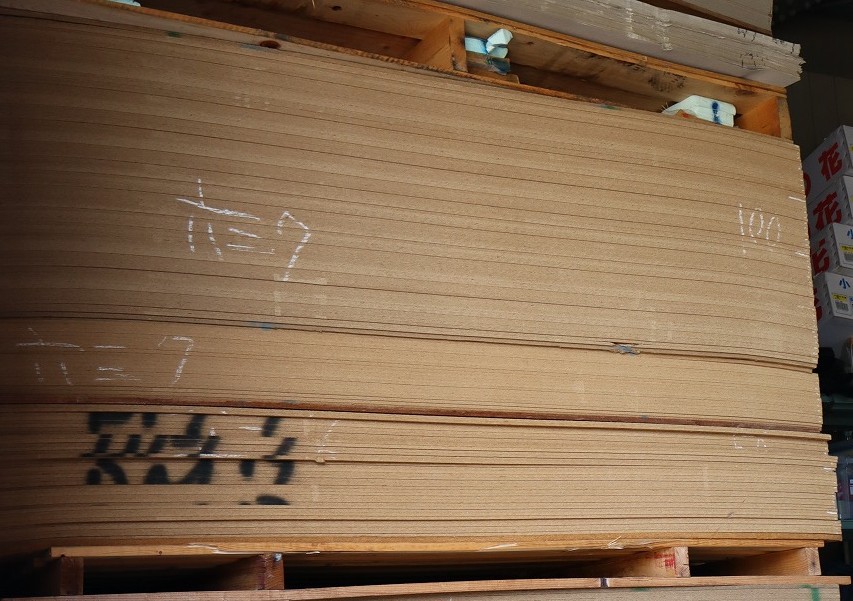
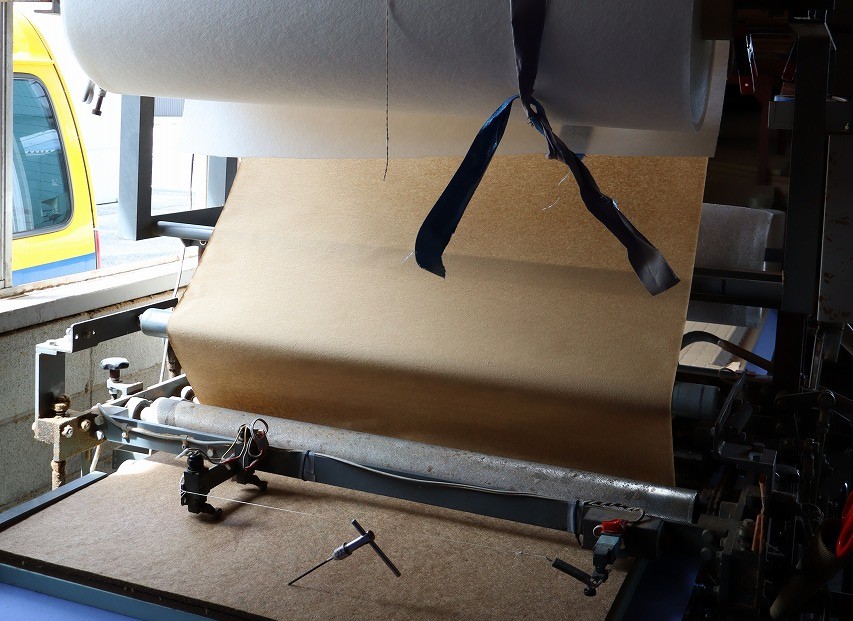
Wrap the tatami boards with paper moisture-proof sheets. Wrapping it regulates moisture and prolongs the life of the tatami. This is a device to prolong the life of your precious tatami.
The sheets are attached to the tatami mat floor by a special machine. The special machine has many needles and threads to sew the tatami mats and the sheets together.
A waterproof sheet is attached to the bottom of RAKUTEI. It is designed so that RAKUTEI can be placed in various places and does not absorb water from the bottom.
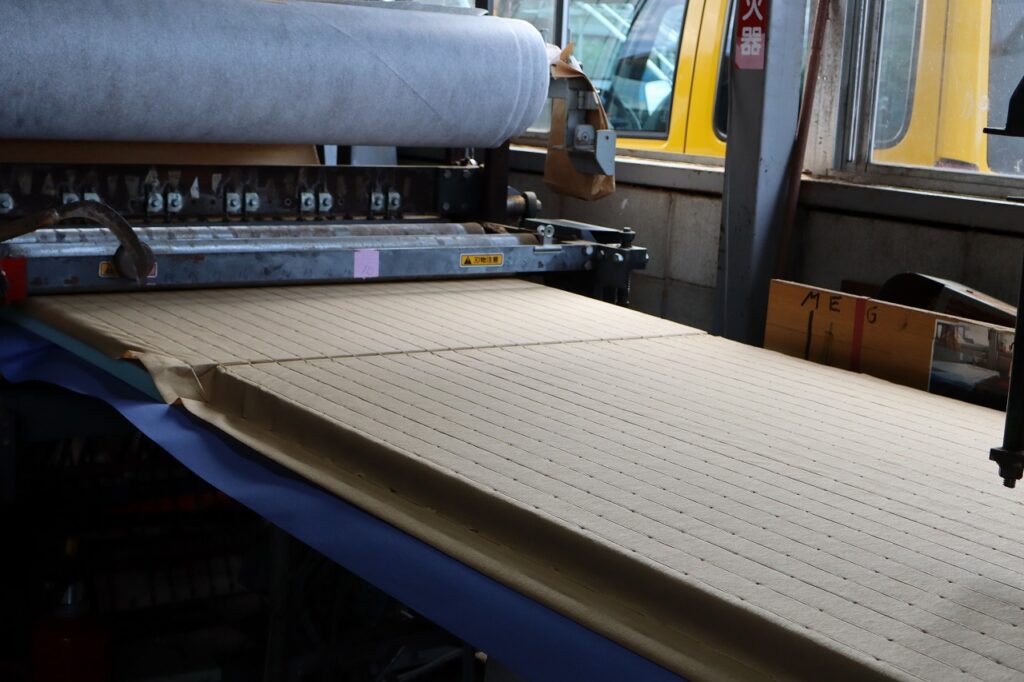
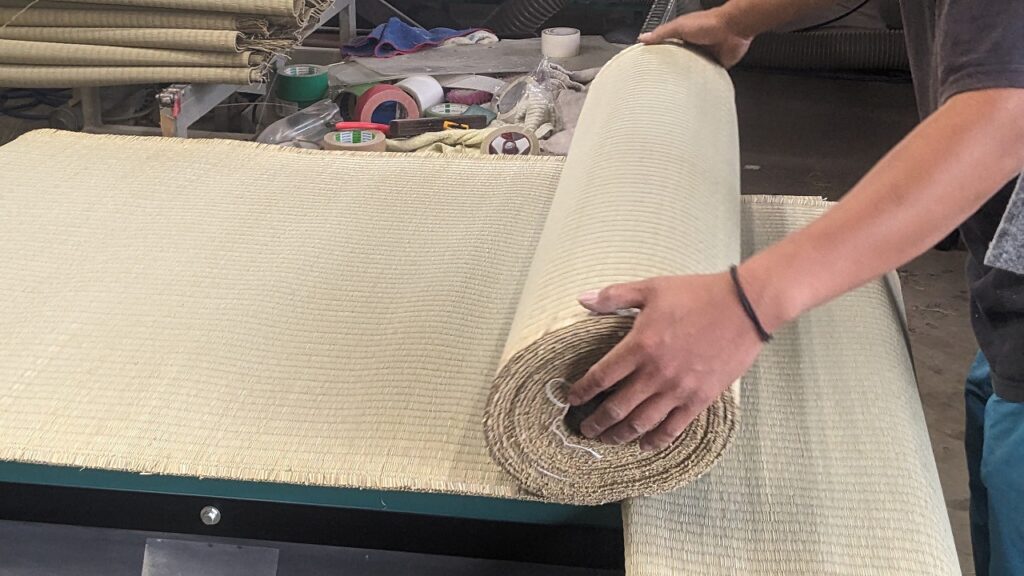
Goza, the tatami surface, is sewn onto the tatami. Goza can be made of Igusa (rush grass), Japanese paper, or resin, but at RAKUTEI we use goza made of Japanese paper. Washi is handmade using traditional Japanese raw materials and is a representative material of Japanese lifestyle and culture. Currently, machine-made washi is used. Washi is characterized by its long, intertwined fibers, making it thin, strong, and long-lasting. In addition, its soft and warm texture makes it ideal for use as tatami matting.
Goza is cut at the edges with a special tatami knife. The knives become smaller and smaller as they are used over the years. The smaller and smaller knives are useful for different uses. Tatami craftsmen use knives for all kinds of cutting, not scissors or cutters.
A kitchen knife is an indispensable partner for tatami making.
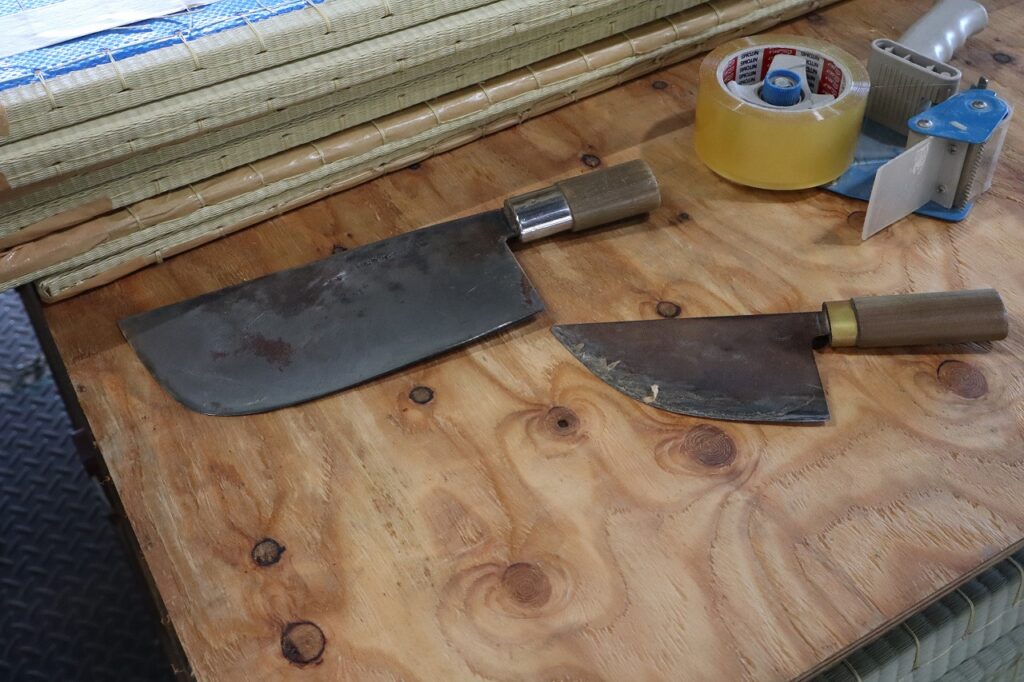
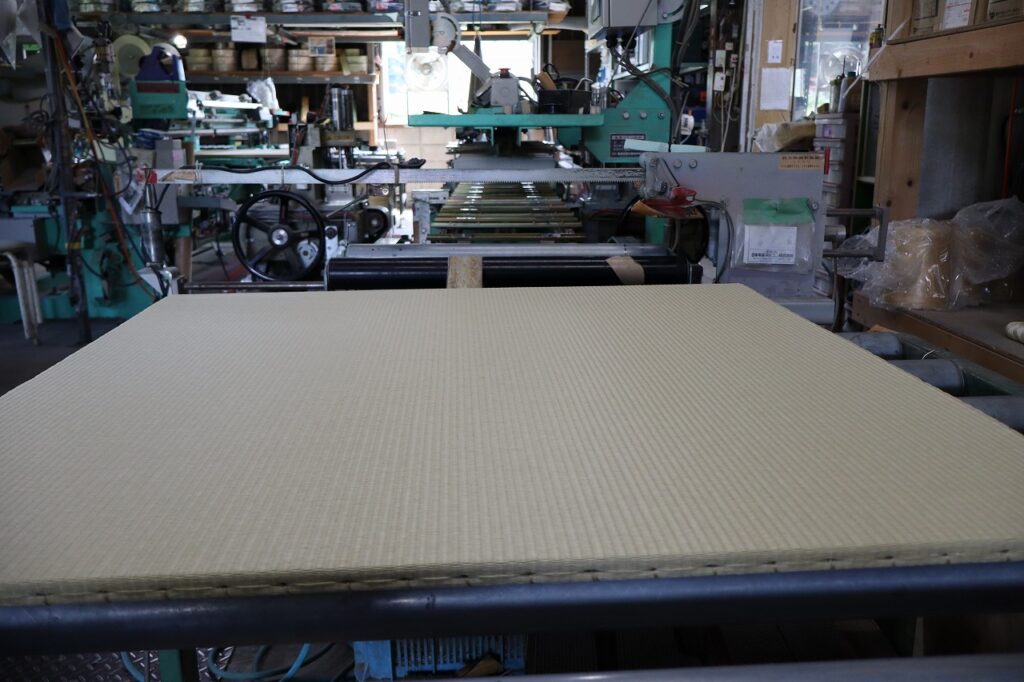
Tatami sheets and goza (tatami mat surface) are sewn onto the tatami board. Now, the tatami appearance is almost complete.
The approximately 1 cm weave of the tatami surface is called tatamime. In a tea ceremony room, the tatamime is used as a guide for where utensils and tea bowls are placed.
There are two types of tatamime: hikime and meseki. Meseki has a narrower weave than Hikime. At RAKUTEI, we use the meshi type of tatami in order to make small area tatami more beautiful.
Tatami-edges are sewn on tatami mats as a finishing touch. Tatami-edge is a cloth attached to the edge of tatami, which reinforces the corners of the tatami surface and closes the gaps between the tatami. Since there are various types of tatami edges, you can choose the pattern that best suits the place of use. At RAKUTEI, we use plain black, which is often used in tea ceremony rooms.
Stepping on tatami mat edges is considered rude in traditional Japanese etiquette. Stepping on the edge of tatami may damage the edge of tatami or cause the surface of tatami to shift. It is considered a breach of etiquette in Japan to do anything that could damage the precious tatami.
The edges of tatami also serve to mark boundaries. For example, in a tea ceremony room, it is considered polite to sit along the edge of the tatami.
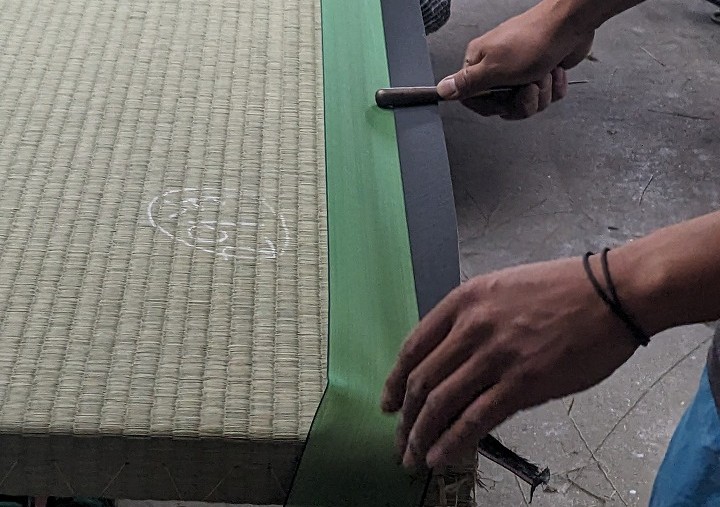
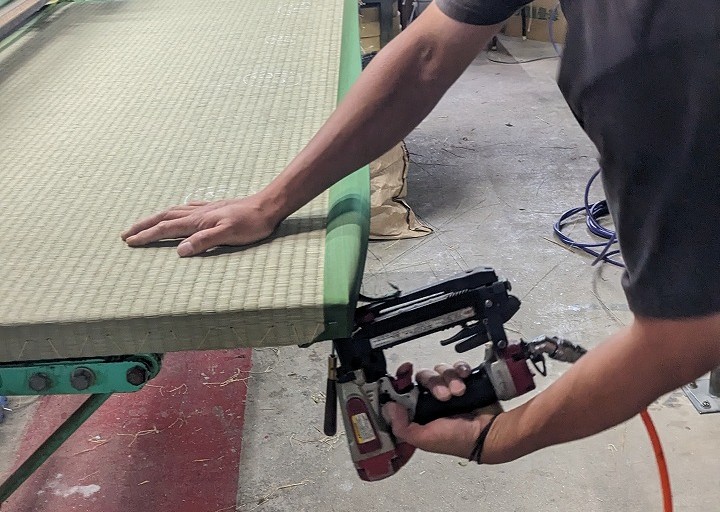
Tatami mats are completed when the tatami edges are temporarily fixed and sewn on. Tatami mats are carefully finished by tatami craftsmen through these processes.
Tatami is damaged if you apply force to the tatami edge or hit the corner of the tatami. When using tatami, care should be taken in handling it. In addition, if the tatami is kept in humid conditions during storage, mold may grow on the Japanese paper of the tatami surface. When storing tatami, it is necessary to place it in a well-ventilated place and use a desiccant to control humidity.
With proper usage and storage, Tatami can be used for a very long time.

